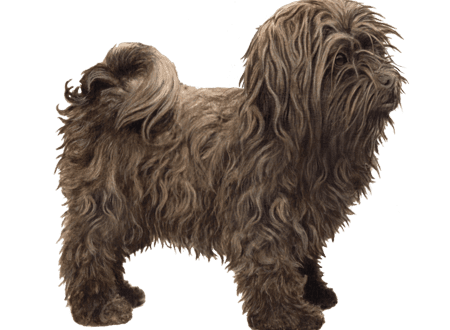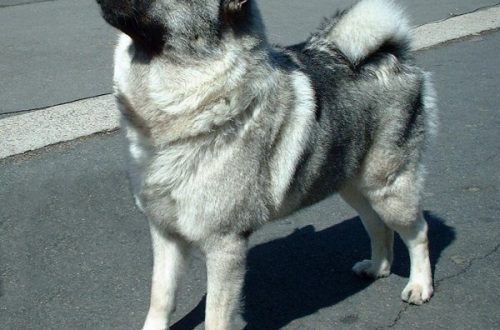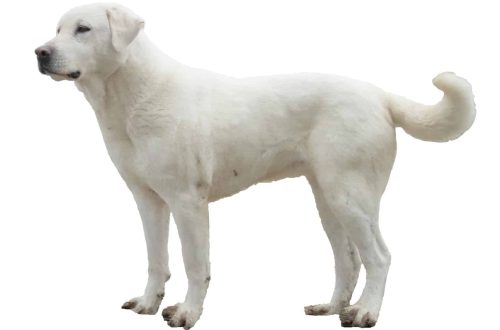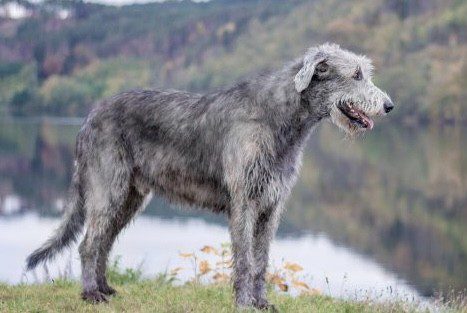
Ирски вучјак
The Irish Wolfhound is a large, wire-haired greyhound dog bred to exterminate wolves. In modern realities, he often plays the role of a companion than a full-fledged hunter.
Садржај
- Characteristics of Irish Wolfhound
- Основни моменти
- Историја ирског вучјег пса
- Video: Irish wolfhound
- Irish wolfhound breed standard
- Photo of Irish wolfhound
- Character of the Irish wolfhound
- Образовање и обука
- Одржавање и нега
- Health and disease of Irish wolfhounds
- Како одабрати штене
- Photo of Irish wolfhound puppies
- Irish wolfhound price
Characteristics of Irish Wolfhound
Земља порекла | Ирска |
| Величина | велики |
| Раст | КСНУМКС-КСНУМКС см |
| тежина | КСНУМКС-КСНУМКС КГ |
| старост | око 10-11 година |
| ФЦИ расна група | греихоундс |
Основни моменти
- Despite the innate intolerance of large predators, the Irishman remains at heart a relatively peaceful and gentle dog, suitable for the role of a harmless pet.
- It is impossible to train aggressive fighters from Irish wolfhounds, and the watchmen from them are very mediocre.
- In their homeland, animals have the status of a national breed, and the Royal Irish Regiment has long chosen them as their talisman.
- The Irish Wolfhound is not an empty talker, although sometimes he is not averse to chatting in a low, chesty bass. Most often, a dog gives a voice out of boredom when forced to spend time alone.
- Every year, on St. Patrick’s Day, the Queen of England honors the Irish Guards by presenting a bouquet of shamrocks not only to the military, but also to the Irish wolfhound in court service (in recent years, the honorary mission has been entrusted to the wife of Prince William, the Duchess of Cambridge).
- Representatives of this breed grow slowly and become real adult dogs by the age of two.
- It is believed that the “Irish” are very patient, but their endurance is not unlimited. It is easiest to provoke a dog to aggression by attacking its owner: not even the most phlegmatic dog will tolerate such disrespect.
- The intellectual indicators of Irish wolfhounds are high. They easily remember commands, but do not tolerate frank drill.
- The correct “Irish” is always kind and indulgent towards children.
- The Irish Wolfhound is not the best friend for domestic cats and other medium-sized animals. A rare dog is able to suppress the hunting instinct in himself and calmly walk past a cat lying on a pillow. Most often, the residence of a dog and a cat in the same territory ends with the death of one of them (guess who).
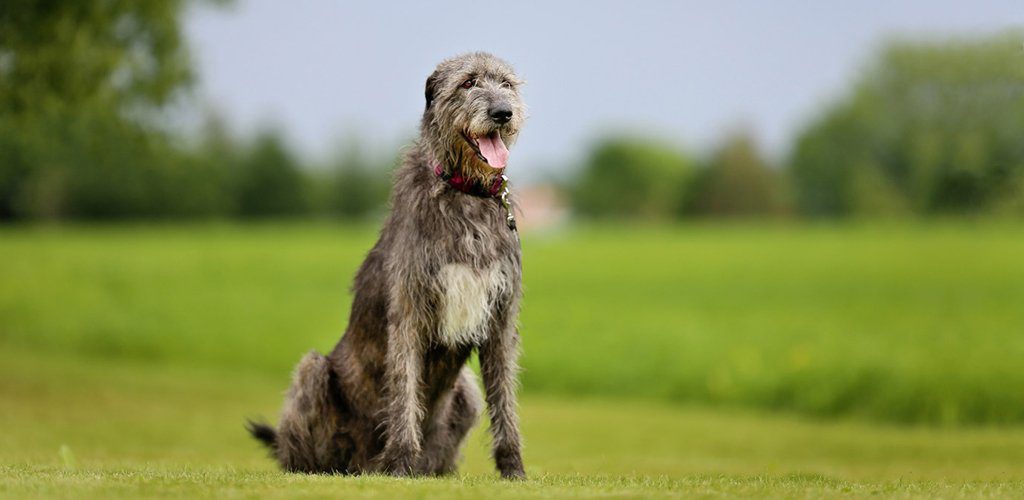
The Irish wolfhound is a straightforward, shaggy giant who will willingly share with you the secret of the purest and most sincere friendship. Born for dangerous and difficult work, today this formidable giant has retired a little, without losing his sports skills and hunting instincts. Nevertheless, do not rush to be fascinated by the brutal and emphasized severe appearance of the Irish wolfhound and do not try to consider him a ferocious defender of your property. Under the guise of seriousness and feigned menacing, a smart, sensitive, but completely unsuspicious creature is hiding, which will never allow itself to offend a person.
Историја ирског вучјег пса
Irish wolfhounds are thought to have descended from Egyptian greyhounds brought to Ireland by Celtic tribes over two thousand years ago. And since the Celts themselves needed animals to protect livestock from wolves, they relied on outstanding dimensions when breeding them. As a result: at the turn of the III and IV centuries. n. e. huge, greyhound -like dogs roamed freely around the island , successfully cracking down on any large predator.
As befits working breeds, the progenitors of the Irish wolfhounds did not shine with beauty, but they plunged them into awe with their formidable appearance and hunting grip. So, for example, at the end of the III century A.D. e. The “Irish” performed in the arena of the Roman circus, where they demonstrated extraordinary prowess in the battle with a lion. As for the success in the hunting field, by 1780, by the forces of these shaggy giants, wolves in Ireland were completely exterminated, moving into the category of living exotics.
Note: for several centuries, Irish Wolfhounds existed in two types: smooth and rough-haired. Subsequently, individuals with coarse, wiry hair displaced their counterparts, as less adapted to the changeable island climate.
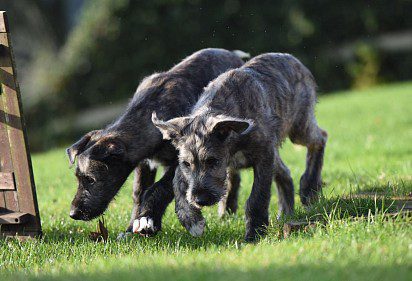
From the Middle Ages until the 17th century, Irish wolfhounds were on the wave of popularity. They were presented to ambassadors and eastern nobles, presented as a living payment for services rendered, sending dogs to all corners of Western Europe and even Asia. Cromwell put an end to this excitement in 1652. The Lord General imposed an official ban on the export of wolfhounds from Ireland, after which they found themselves in forced isolation, which provoked the degeneration and almost complete extinction of the breed.
From the middle of the 19th century, interest in this type of greyhound gradually revived. In particular, in 1885, the first club of breed lovers opened in Ireland under the leadership of Captain G. A. Graham. Here, a year later, they approved the annual Graham Shield Award for dogs that have retained the maximum of the breed characteristics of their ancestors. By the way, Graham himself, in an attempt to return to the world the disappearing genus of Irish wolfhounds, did not hesitate to mix the genes of Great Danes and Deerhounds into the blood of his representatives.
In the USSR, they started talking about the “Irish” in the late 80s, when several purebred sires were imported from the Polish kennel “Sagittarius”. At the same time, animals began to be exhibited in Russian rings from the beginning of the 90s, after the domestic pedigree gene pool was enriched with breeding individuals from Hungary, Germany and other Western countries.
Video: Irish wolfhound
Irish wolfhound breed standard
The Irish wolfhound is a busty giant that looks a lot like a deerhound, but at the same time more dense and strong. The minimum allowable height of an adult male is 79 cm. Despite its impressive size, the “Irish” does not look heavy and clumsy. On the contrary, in movement the dog reveals such lightness and plasticity that it was absolutely impossible to suspect in it.
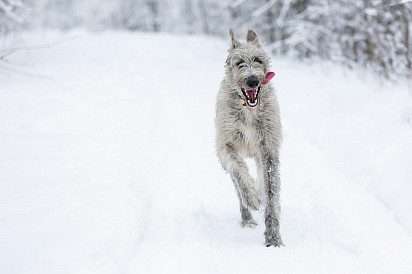

Глава
The skull of the “Irish” is elongated, with an almost flat forehead and a narrowed, elongated muzzle.
Уједи
The Irish Wolfhound can have scissor and level bite types, but the first option is preferable.
очи
The dog’s eyes should be as dark as possible.
уши
The ears of the Irish wolfhound are small, stuffed, pink-shaped.
врат
Purebred “Irish” – the owner of a long, well-muscled and somewhat arched neck with tightly stretched skin.
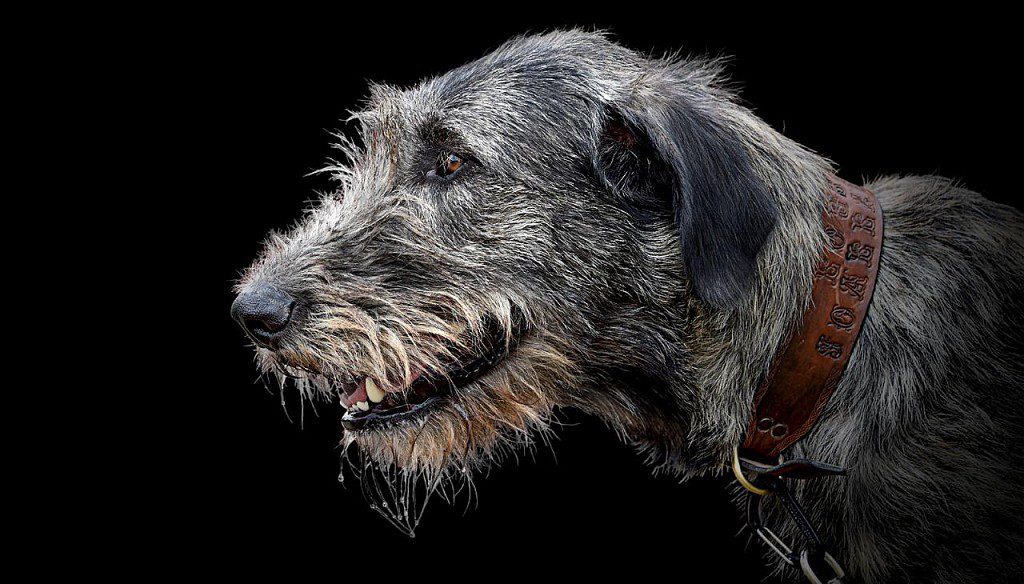

Рам
The body of the dog is elongated, noticeably expanding in the croup. The loin of the Irish wolfhound is convex. The chest is developed, moderately deep, the stomach is tucked up.
удова
The Irishman’s legs are long and bony with sloping shoulder blades, long, muscular thighs and low hocks. The paws of the animal are rounded, set straight, with well-arched fingers and claws.
Реп
The tail is long, of good thickness, with a slight bend.
Вуна
The coat of the dog is quite hard, and the hair on the eyebrows and muzzle is wiry.
boja
Irish wolfhounds are typical of the same types of colors as for deerhounds, i.e. white, red, brindle, fawn, gray, black, etc.
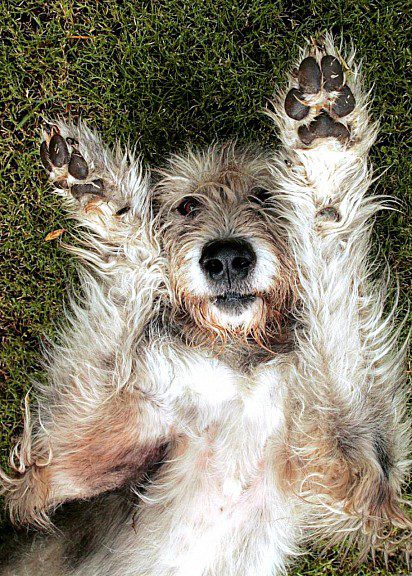

Могући пороци
Not every Irish wolfhound fits 100% into the standard, fixed by the breed standard, and deviations from the ideal can be both insignificant and threatening the animal with disqualification. Most often, the mark at the competition is reduced for the presence of the following defects:
- light or too massive head;
- convex forehead;
- short square body;
- curvature of the front legs;
- sagging or straight back;
- large or hanging ears;
- clubfoot or with splayed legs;
- short neck and dewlap on it;
- too narrowed or expanded chest;
- a sharp bend in the tail;
- any color of the iris, except black;
- light lobe;
- lips and eyelids of any shade other than black;
- fragile hind legs;
- widely spaced fingers.
Photo of Irish wolfhound
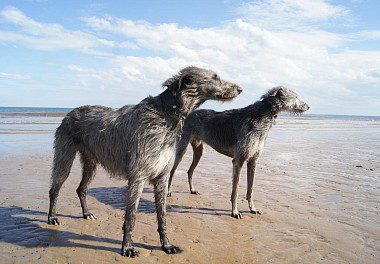

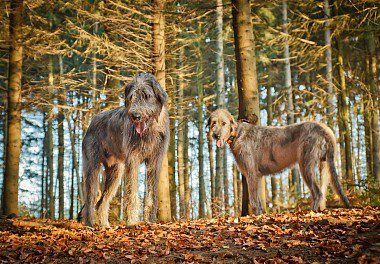

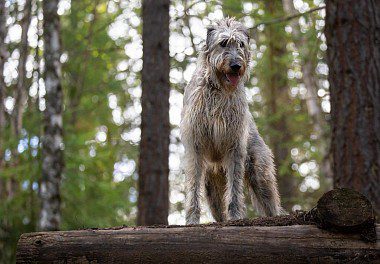

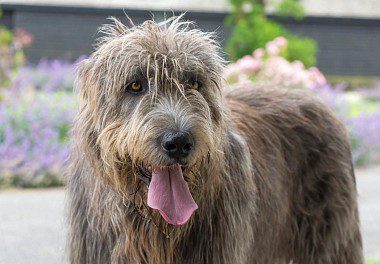

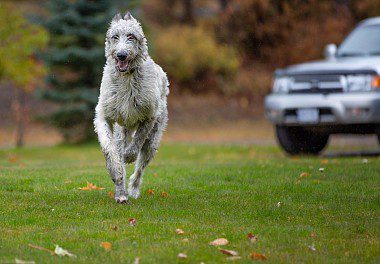

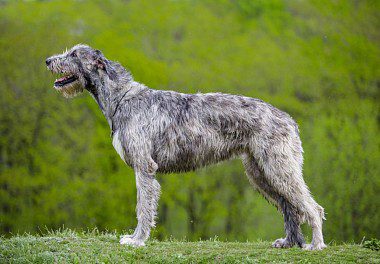

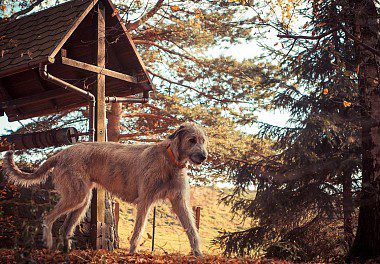

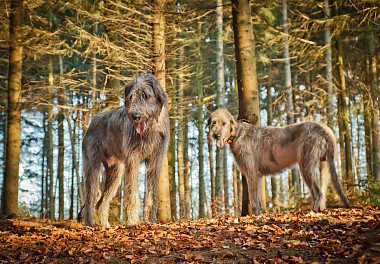

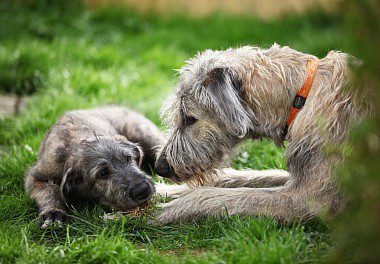

Character of the Irish wolfhound
At one glance at the Irish wolfhound, it begins to seem that you have a typical tough nut to crack, which will not be easy to get along with. In reality, everything is exactly the opposite: any average “Irish” is insanely attached to the owner. The dog does not grovel and is not humiliated, but this does not prevent the animal from cherishing communication with the person who took him into his home. In addition, dogs of the Irish Wolfhound breed masterfully manage their own aggression, saving this quality for a serious opponent and never using it against someone who is obviously weaker. So feel free to leave the children in the care of the pet: he will approach the matter with all responsibility and caution.
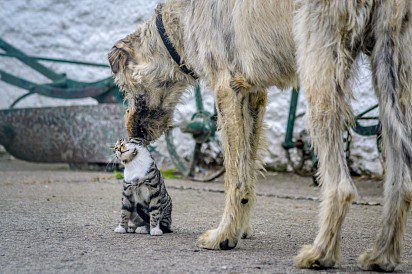

Since the ancestors of the “Irish” have always hunted wolves and never people, it will be problematic to turn these good-natured giants into suspicious bodyguards. Even with strangers, Irish wolfhounds are quite peaceful, if they do not radiate too obvious a threat. But shaggy “thugs” manage to establish contacts with other animals with difficulty. And if the wolfhound still agrees to tolerate the presence of a medium-sized dog, then he will certainly start a conflict with some papillon . And the point here is not so much in rivalry, but in natural instincts. The Irish wolfhound does not know the difference between a garbage rat, a stray cat and a miniature dog. For him, all of them are prey, with which you can have fun, and most importantly, without risk to health.
It is believed that leadership habits are alien to Irish wolfhounds, therefore, in principle, dogs should not encroach on the master’s authority. Nevertheless, the breed is distinguished by independence and independence in decision-making, so it is better to behave with its representatives seriously, without flirting and lisping. Animals are not inclined to jealousy and hiding from the Irish wolfhound in order to cuddle a cat or scratch another dog behind the ear is clearly not worth it. At the same time, shaggy giants can be offended very strongly, reacting especially painfully to an unfair, as they themselves think, punishment.
With age, the character of the Irish wolfhound begins to change, which is generally typical for large breeds. Usually the “old men” are more capricious, touchy and irritable, and this will have to be put up with. The activity of an elderly animal also decreases, so the “Irish” who have overcome the 7-year milestone often lie down in their corner, remaining fearless wolf hunters, except perhaps somewhere deep in their souls.
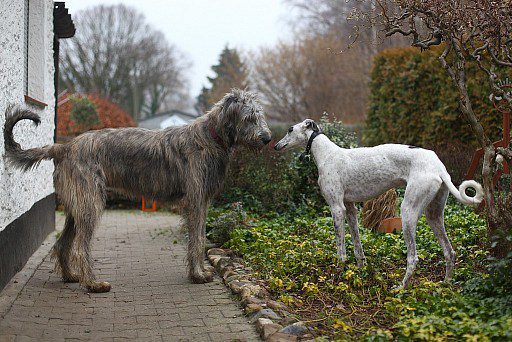

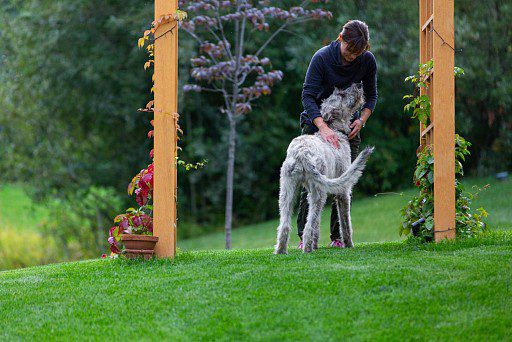

Образовање и обука
No matter how much you want, but the idea of recording an Irish wolfhound on the ZKS will have to be abandoned. A benevolent, self-possessed character is a signature feature of the breed, and raising bodyguard dogs from its representatives is a pointless exercise. After all, there are Rottweilers and Caucasian Shepherds for this . Agility, frisbee and weight pulling are more likely to provide the animal with problems with the spine than bring real pleasure, so it is better not to threaten such sports disciplines. But you can indulge in coursing and racing if the pet does not have heart pathologies.
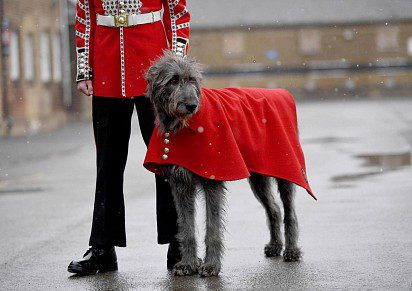

OKD is vital for Irish wolfhounds, since the best method to instill in such a large dog the basics of obedience has not yet been invented. And it doesn’t matter whether you take on the mission of training your four-legged friend or entrust the matter to a specialist. The main thing is that the animal during the lessons should be tuned in to contact and interested in achieving the goal. The learning process itself should be based on mutual respect. Irish wolfhounds categorically do not accept rough treatment, so do not raise your voice when giving a command, and even more so do not go over to shout. And of course, do not “force” the animal with multiple repetitions of exercises: you did 2-3 sets and rested for an hour or two. Believe me, this method will give a better result than the systematic chewing of the same thing.
It is possible to teach an Irish wolfhound puppy to a leash from 4 months old, and it is allowed to let the baby run freely only when he has clearly learned the meaning of the command “Come to me!”. The first walks on a leash should be short: if the animal trudges after you, then someone went too far with the load, and it’s time for the pet to go home, to rest. By the way, about overloads: they are extremely dangerous for the young “Irishman”, and especially for his unformed backbone.
Puppies of the Irish wolfhound have a very pronounced biting reflex. Kids can work out their grip on toys, objects around them and the owner’s hands, so the owner’s task is to explain to the pet in an accessible way what you can try by mouth and what not. Just do not try to shake and beat the puppy that bit you or the child. You don’t want to raise a nervous, vicious dog with a chronic mistrust complex towards humans, do you? The hugging game that little Irish wolfhounds love so much should also be nipped in the bud. If the friendly attacks of a puppy are fun and pleasant, then the hugs of an adult greyhound are a pleasure for an amateur, and for a physically strong lover.
Одржавање и нега
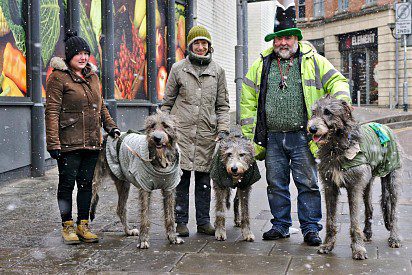

There is an opinion that large-sized Irish wolfhounds are uncomfortable and bored in apartments and houses. In fact, the comfort of the pet depends entirely on the efforts of the owner. If you provide the dog with a spacious bed in a corner where household members will not cling to it with their feet, and walk normally, there will be no difficulties with apartment maintenance. Keep in mind that the Irish Wolfhound breed is contraindicated in lying on hard surfaces (sensitive joints + a very thin layer of subcutaneous fat), and therefore many owners allow animals to lie on their own bed or sofa. Keeping an Irish wolfhound in an aviary is an extreme measure, this dog does not tolerate loneliness and needs constant close contact with a person. If you still decide to take such a step, do not leave your four-legged friend to spend the winter in albeit insulated, but still a kennel. Firstly, it is cruel, and secondly, it harms the health of the pet. It is also unacceptable to put an Irish wolfhound on a chain: he was not hired as a watchman.
Хигијена
The coarse wool of the Irish wolfhound is tidied up with a metal comb and brush, allowing you to quickly and painlessly comb out dead hairs and debris collected by the animal during a walk. Theoretically, the “Irish” does not need a haircut, but in practice, most owners shorten their pets’ hair in the most dirty places – on the paws and under the tail. Hair on the muzzle is not allowed to be cut, but it is necessary to take care of it, therefore, as soon as the dog has eaten, it is supposed to wipe the “mustache” and “beard” with a clean rag.
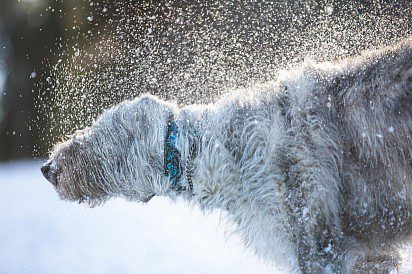

In addition to the standard brushing of Irish wolfhounds, trimming should be done, but in reality this is done mainly by owners of show dogs. As a rule, not the whole animal is pinched, but only the head, and it is better to do it manually, armed with a silicone fingertip. Usually trimming starts from the ears: the hair from the outer part of the ear cloth is plucked until the ear is relatively smooth. The wedge between the eyes, running from the forehead to the skull, is also neatly trimmed, and with it the lines of the neck and cheeks. It is better to process the dog not a day before the show, but about a month and a half so that the transitions between the plucked and untreated zones are not striking. Some breeders practice systematic weekly trimming, or rather its simplified version, when only bristling hairs are removed throughout the skull.
Bathe Irish Wolfhounds infrequently – 2-3 times a year is enough, using moisturizing shampoos for rough-haired dogs such as No. 33 Coarse Coat Shampoo or Clean Coating Shampoo from Isle of Dogs. Cleaning the ears of the “Irish” does not differ in special subtleties. Once a week, the auricle is treated with a veterinary lotion, extracting sulfur and dirt from it with the help of cotton pads and sticks. You need to monitor your eyes more carefully, rubbing them every 5-7 days with chamomile infusion. But it is better not to treat eye inflammations on your own: there is a risk of incorrectly diagnosing and starting the disease.
The care of the claws and teeth of the Irish wolfhound is classic: cutting the plate with a nail cutter as it grows and removing plaque with a cleaning nozzle 3-4 times a month. After walking, check the skin on the pads of your pet’s paws. If there is no visible damage, rinse the paws with warm water and dry. If the skin is cracked, which usually happens in winter, additionally lubricate it with oil or a fat cream.
ограда за коње
For walking the Irish wolfhound, it is more expedient to use a belt leash. Adult dogs are walked twice a day for an average of an hour (10-minute visits to the toilet are not considered), puppies up to six months are taken out to “ventilate” every 3 hours for 10-15 minutes. Do not forget, Irish wolfhounds are energetic guys, but far from being supermen, so overloads are harmful for them.
Let the dog run freely if you are not walking near the freeway and there are no live provocateurs in the form of stray cats in your field of vision. Keep in mind that Irish wolfhounds are prohibited from jumping for up to a year, so you can start practicing acrobatic numbers in the fresh air only when the pet’s skeletal system is strengthened. If you walk the Irish wolfhound outside the city, in groves and copses, take care of protection from ectoparasites and do not be lazy when you come home to inspect the armpits, withers and inguinal areas of your pet. If the “enemy” is found, remove it from the animal’s body and observe the behavior of your ward for the next couple of days – it’s easy for a dog to get piroplasmosis from a tick for a dog.
Храњење
Considering that the basis of the diet of a large dog should be lean meat or “drying” of super-premium and holistic class, Irish wolfhounds cost their owners a lot. Of course, meat protein can be periodically replaced with fish, as well as offal, but such experiments also involve decent spending. As for cereals, the best options for the “Irish” would be buckwheat, rice and oatmeal. At the same time, the share of cereal products in the pet’s bowl should not exceed ⅓ of the serving, the remaining ⅔ is occupied by meat and its waste.
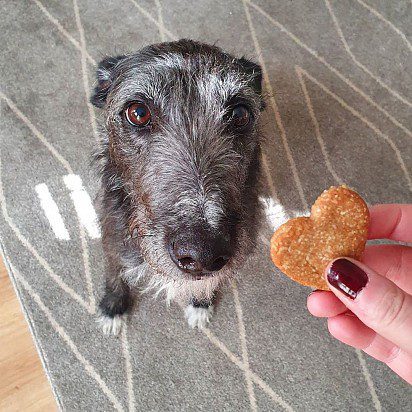

Irish wolfhounds, as a rule, are not allergic, so their table can be varied with turkey and chicken meat. The main thing is not to completely replace beef and lamb with poultry. It is useful to include low-fat cottage cheese and kefir, pumpkin and zucchini, as well as seasonal greens in the dog’s menu. Potatoes in the diet of the Irish wolfhound are acceptable, but occasionally and in small quantities. Be careful with the bones: it is better not to give them to 4-month-old babies at all, so as not to spoil their teeth. But it will be useful for teenage one-year-olds to indulge in a piece of veal ridge – they will receive a portion of natural collagen and train the grip of the lower jaw. For adult and older dogs, it is better to replace the bones with less hard treats from the pet store: they do not have such a detrimental effect on tooth enamel and do not provoke constipation.
Важно: in order to avoid stomach torsion after a meal, the Irish wolfhound should lie down for 1.5-2 hours, although often a well-fed animal is eager to play. The task of the owner is to teach the dog to rest after each meal, without being reminded.
Puppies of Irish wolfhounds grow very intensively, and therefore inexperienced owners often increase the baby’s rations. This is fundamentally wrong. The young “Irish” must eat strictly according to the grid designed for puppies of large breeds, otherwise you risk simply feeding him. Of course, a well-fed wolfhound looks much prettier than lean fellows, but his musculoskeletal system will definitely not be happy with those extra pounds.
Vitamin complexes and dietary supplements are an obligatory item on the menu of an Irish wolfhound who eats “natural”. Particular attention is paid to preparations with glucosamine and chondroitin, which support the ligaments and joints of the animal in working condition. If you need to work on improving the dog’s coat, take a closer look at the complexes with Omega-3, 6 and 9.
Учесталост храњења:
- from 1 to 3 months – 4-5 times a day;
- from 3 to 6 months – 3 times, with an interval between feedings of 5 hours;
- from 6 months – 2 times a day, but if the puppy is weak, you can continue to feed three times a day for up to a year.
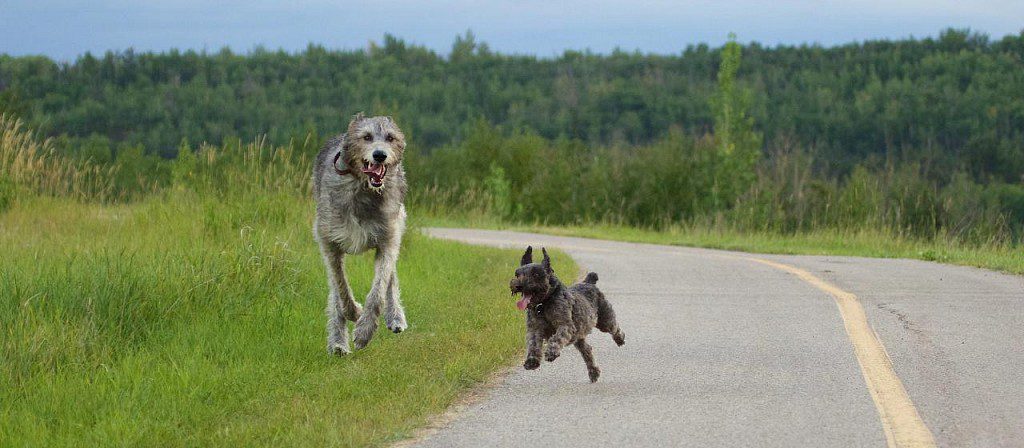

Health and disease of Irish wolfhounds
Indomitable on the outside, inside the Irish wolfhounds remain rather fragile creatures with a low life expectancy (only 6-8, rarely 10 years) and a predisposition to a wide range of diseases.
Ailments of representatives of this breed:
- дислокација коленске капице;
- хипотиреоза;
- дисплазија кука;
- pyoderma (purulent skin lesions);
- катаракта;
- entropy (inversion of the eyelid);
- остеосарком;
- Wobbler syndrome (disturbance of the central nervous system, as a result of which the cervical spine is compressed);
- hygroma of the elbow joint;
- проширена кардиомиопатија;
- von Willebrand disease (pathology of blood clotting);
- shoulder osteochondrosis;
- bloating / volvulus of the stomach.
Како одабрати штене
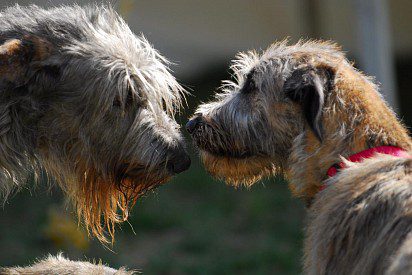

- Irish wolfhounds-males are open and straightforward, which cannot be said about bitches. So getting acquainted with the breed for the first time, stop at the “boy”, it is easier to work with him.
- To study the character of a pet, choose a grown up, not a two-month-old puppy. Too young “Irish” personality is weakly expressed, so they are all equally sweet and funny.
- Do not avoid getting to know the mother and father of the baby in order to see the prospects for the development of the pet.
- Assess the atmosphere prevailing in the nursery. Dirty, cramped cages, lethargic puppies with signs of rickets, the breeder’s refusal to show at least one of the producers suggests that here they simply make money on dogs.
- Take an interest in the age of the bitch whose puppies are offered to you, and refuse to buy if a litter from a 7-year-old “grandmother” is put up for sale.
- Check your Irish Wolfhound puppy’s veterinary passport for age-appropriate vaccinations.
- A responsible breeder always tests the litter for at least some of the genetic diseases, so if the cattery offers customers to take a look at the results of the examination of animals, this is a plus for the institution’s karma.
- Buy 6 or preferably 12 week old puppies and discard 5 week old puppies taken too early from the bitch.
- The cost of an Irish wolfhound puppy has nothing to do with its color. If the seller is trying to inflate the price tag for a unique shade of wool, he is simply cunning.
- When purchasing a grown puppy, ask the breeder if the wolfhound is familiar with the leash, what commands he knows. In an experienced specialist, “teenagers” are socialized, obedient and respond to certain commands.
Photo of Irish wolfhound puppies
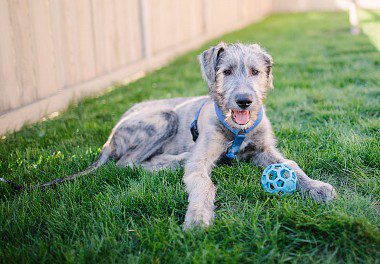

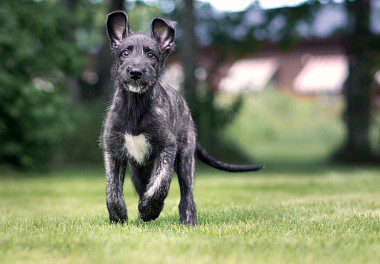

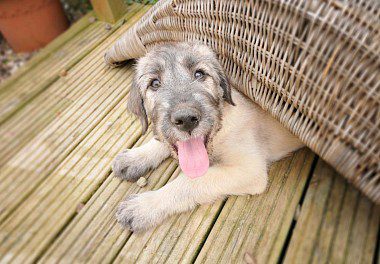

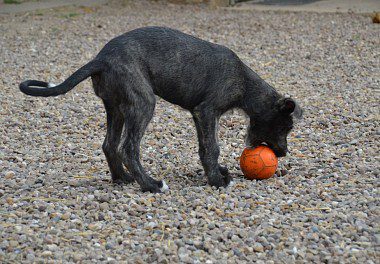

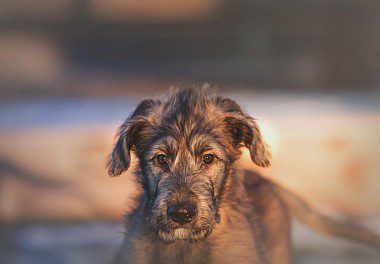

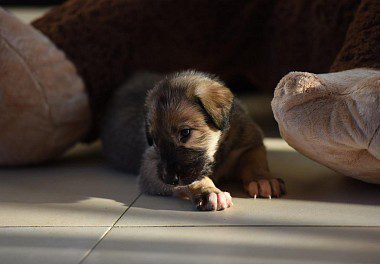

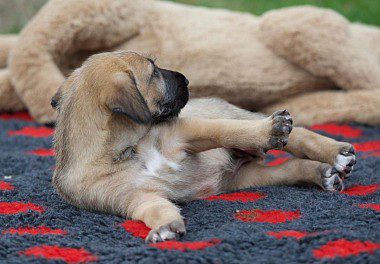

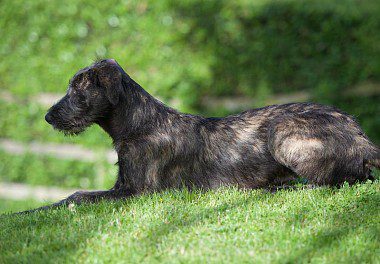

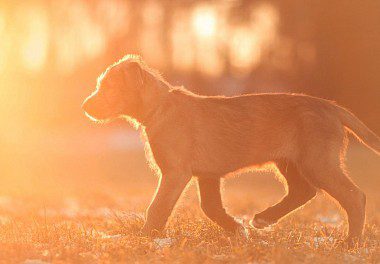

Irish wolfhound price
In our country, Irish wolfhounds are relatively little advertised, so there are not so many registered nurseries breeding the breed. Nevertheless, it is quite possible to buy a purebred “Irish” in Russia if you are ready to pay about 1000 – 1500$ – this is the amount that most domestic breeders value their puppies.





